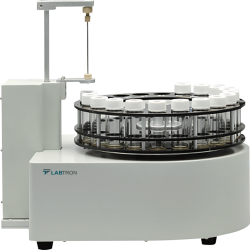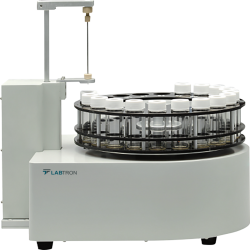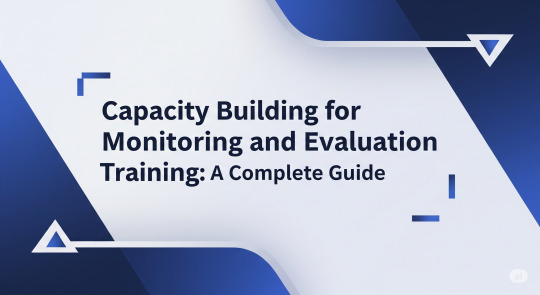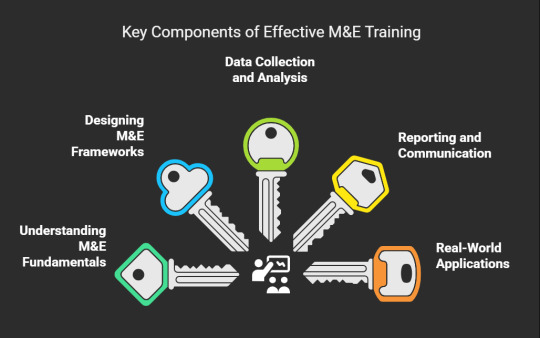#TOC Analyzer
Explore tagged Tumblr posts
Text
TOC Analyzer
Labmate TOC Analyzer measures organic carbon for water treatment and environmental monitoring. It ensures regulatory compliance and water quality. Features include automatic calibration, real-time data display, high sensitivity, auto-sampler compatibility, and multi-range detection. Ideal for various water analyses.

0 notes
Text
Autosampler for TOC Analyzer
An autosampler for a Total Organic Carbon (TOC) analyzer is an accessory device used to automate the sample introduction process for TOC analysis. It has maximum 19 no of samples. TOC analyzers are commonly used in environmental, pharmaceutical, and industrial applications to quantify the amount of organic carbon present in a sample.

0 notes
Text

Autosampler for TOC Analyzer LATA-A10 is specifically designed to make the analytical experiments effortless and simpler. It can hold up to 19 different samples and the software makes the monitoring fully automatic. During injection the motion of the components are also monitored. For every motion there is a defined time window and a mechanical range which is decided by the processor. A fault message is displayed on the computer if any step was not carried out properly.
0 notes
Text

TOC or Total Organic Carbon analysis, is known to be a fundamental method that is utilized in numerous fields, including water treatment, environmental science, pharmaceuticals, and the food industry.
The principle backing a Total Organic Carbon Analyzer is embedded in the quantification of all carbon compounds, both organic and inorganic, in a given specimen.
0 notes
Text
Running an unfamiliar instrument while no one else is in the lab has me flinching every time it makes a weird noise.
The thing is, most instruments do nothing but make weird noises the entire time they're running.
#this is my third time working with the toc analyzer#(that's total organic carbon)#it's a really easy instrument but i did have to deal with hcl and I HATE doing that with no one around#and I'm paranoid about brealing instruments because they're expensive and complicated#if this was the gc i would be so chill because the gc and i are besties#but it's not#hylian rambles#hylian does science#lab technician
14 notes
·
View notes
Text
TOC Analyzer Market Value, Share, Competitive Analysis 2037
Research Nester assesses the growth and market size of the global TOC analyzer market, which is anticipated to be driven by the increasing demand for stringent environmental regulations and the growing need for water and wastewater treatment solutions.
Research Nester’s recent market research analysis on “TOC Analyzer Market: Global Demand Analysis & Opportunity Outlook 2037” provides a detailed competitor analysis and a comprehensive overview of the global TOC analyzer market in terms of market segmentation by offerings, type, application, technology, end user industry, and region.

Rising Environmental Regulations and Water Treatment Needs to Boost Global Market Share of TOC Analyzers
The global TOC analyzer market is estimated to grow significantly, primarily due to the increased emphasis on environmental protection and the rising need for water quality monitoring in various industries. The expansion of the market is also supported by technological advancements in TOC analyzers, including the integration of AI for predictive maintenance and real-time monitoring capabilities. Leading industry players are focusing on expanding their global footprint through strategic partnerships and mergers, further fueling market growth.
Request Free Sample Copy of this Report @ https://www.researchnester.com/sample-request-6311
Growth Drivers:
Stringent Environmental Regulations
Technological Advancements in TOC Analyzers
Challenges:
High Initial Investment
Complexity in Usage and Maintenance
The hardware segment is anticipated to secure a 57.2% market share between 2025 and 2037. Over this period, the segment is projected to grow at a CAGR of 5.4%. This segment's stronghold in the market is largely due to its vital role in essential operations such as wastewater treatment facilities and pharmaceutical production. Breakthroughs like the introduction of next-generation TOC analyzers from companies such as Endress+Hauser have established a solid platform for continued innovation and market expansion within this segment.
Request for customization @ https://www.researchnester.com/customized-reports-6311
By region, North America is expected to lead the TOC analyzer market, capturing a 32.1% value share throughout the forecast period of 2025-2037. The region's growth is likely to be propelled by stringent environmental regulations and the presence of significant industry players. Additionally, the heightened focus on water quality and pollution control efforts in the United States further cements North America’s position as a dominant force in the global market.
This report also outlines the existing competitive scenario of some of the key players in the global TOC analyzer market, including company profiling of Shimadzu Corporation, Hach, Xylem, General Electric, Beckman Coulter Life Sciences, Swan Analytical Instruments, Electro-Chemical Devices, and HORIBA Group. Through various innovations, companies maintain their market competitiveness by retaining their existing clients through strong supplier-dealer relationships and continuous product development.
Access our detailed report @ https://www.researchnester.com/reports/total-organic-carbon-analyzer-market/6311
About Research Nester-
Research Nester is a leading service provider for strategic market research and consulting. We aim to provide unbiased, unparalleled market insights and industry analysis to help industries, conglomerates and executives to take wise decisions for their future marketing strategy, expansion and investment etc. We believe every business can expand to its new horizon, provided a right guidance at a right time is available through strategic minds. Our out of box thinking helps our clients to take wise decision in order to avoid future uncertainties.
Contact for more Info:
AJ Daniel
Email: [email protected]
U.S. Phone: +1 646 586 9123
U.K. Phone: +44 203 608 5919
0 notes
Text
Goddddd what do you mean I have to do homework when I'm generating Rejuvenation headcanons at mach speed
#tic tocs#if I was allowed to write an essay on whatever media analysis I wanted this wouldn't be a problem#but no ofc I'm assigned a book and assigned a specific way I'm supposed to analyze it#I'm gonna fight my prof in a Dennys parking lot /j#I JUST WANT TO THINK ABOUT MY FUNNY HYPERFIXATION
1 note
·
View note
Link
#market research future#on-line total organic carbon#on-line toc analyzer market#on-line toc analyzer#total organic carbon analyzer
0 notes
Text
Carbon and Sulfur Analyzer

A carbon and sulfur analyzer, often referred to as a CS analyzer, is a piece of laboratory equipment used to determine the carbon and sulfur content in various types of materials. This equipment is particularly essential in industries such as metallurgy, petrochemistry, and environmental analysis, where precise knowledge of carbon and sulfur content is critical for quality control and compliance purposes. It has Platinum infrared as a light source with high spectral efficiency.
0 notes
Text

Portable TOC Analyzer
Portable TOC Analyzer is a high precision unit to detect total organic carbon content in pharmaceutical water. Features portable design and touch screen for easy on-site operation. With 24-bit ADC converter and 0.001 to 1.2 mg/L of measuring range, can provide accurate result within 3 minutes. Ergonomic compact design with large storage space and alarm system for malfunction ensure stable and reliable performance.
0 notes
Text
Total Organic Carbon (TOC) analyzer

Total Organic Carbon (TOC) analyzer,is made to break down samples using High Temperature Combustion mode in order to determine the carbon content of most solid, liquid, and gaseous samples.It totally computer-aided equipment that improves performance.Measurement Range-0-30000 mg/l; Detection Limit-50 μg/l; Parameters-TC–Total Carbon•TIC–Total Inorganic Carbon•POC– Purgeable Organic Carbon• NPOC– Non-Purgeable Organic Carbon; Maximum Salinity-85 g/l for more visit labtron.us
0 notes
Text
Another throwaway account of hate arrived in my inbox.
This one even threw in the “are you even in forensics?”
And I’m like, oh buddy… do you want me to talk about ADD/H calculations for ToC Intervals? Daubert Standards? Regional Development times for Calliphorid larvae and development tables?
Cause I can. In fact, I think a lot of you would like me to talk about how forensic entomologist like myself analyze evidence and come to our conclusions.
So that might happen in the near future, thanks for the idea throwaway account!
#jumblr#forensic science#forensic entomology#STA’s fan base really hates that their grifter is getting called out
101 notes
·
View notes
Text
Capacity Building for Monitoring and Evaluation Training: A Complete Guide

Monitoring and Evaluation (M&E) is a critical function for organizations working in development, nonprofits, and even corporate sectors. However, many professionals struggle with gaps in their M&E knowledge, making it difficult to track progress, measure impact, and make data-driven decisions.
If you’ve ever felt unsure about designing M&E frameworks, collecting the right data, or analyzing results effectively, you’re not alone. The good news? Capacity building in M&E can bridge these gaps and turn you into a confident, skilled professional.
In this blog, we’ll break down everything you need to know about M&E training—why it matters, key skills you’ll gain, and how to choose the right program. Plus, if you're ready to take the next step, we’ll show you a proven way to build your expertise.
Why Capacity Building in Monitoring and Evaluation Matters
Many organizations face common challenges when it comes to M&E:
Lack of skilled staff – Without proper training, teams struggle to set up effective M&E systems.
Poor data quality – Inaccurate or incomplete data leads to unreliable insights.
Low stakeholder engagement – When teams don’t understand M&E, they don’t see its value.
Inefficient reporting – Reports fail to capture real impact, making it hard to secure funding.
Capacity building in M&E tackles these issues by equipping professionals with the right tools and knowledge. Whether you’re an M&E officer, program manager, or development professional, structured training can help you:
Design strong M&E frameworks
Collect and analyze data effectively
Improve decision-making with evidence
Communicate impact clearly to stakeholders
Key Components of Effective M&E Training
Not all M&E courses are the same. A high-quality program should cover these essential areas:
1. Understanding M&E Fundamentals
Before diving into complex techniques, you need a solid foundation. A good course will explain:
The difference between monitoring and evaluation
Key M&E terms and concepts
How M&E fits into project management
2. Designing M&E Frameworks
A weak framework leads to weak results. Training should teach you:
How to set clear indicators and targets
Logical framework approaches (logframes)
Theory of Change (ToC) development
3. Data Collection and Analysis
Many professionals struggle with turning raw data into insights. The right training will help you:
Choose the best data collection methods (surveys, interviews, focus groups)
Use tools like Excel, SPSS, or KOBO Toolbox
Interpret data to make informed decisions
4. Reporting and Communication
If stakeholders don’t understand your reports, your hard work goes unnoticed. Learn how to:
Create clear, compelling reports
Use visualization tools (charts, graphs, dashboards)
Present findings in a way that drives action
5. Real-World Applications
The best training includes case studies and practical exercises, so you can apply what you learn immediately.

Who Needs M&E Training?
M&E skills are valuable across multiple roles:
Project Managers – Need to track progress and measure success.
M&E Officers – Must master data collection, analysis, and reporting.
NGO & Development Professionals – Require impact measurement for donor reports.
Government Officials – Use M&E to assess policy effectiveness.
Researchers & Consultants – Need strong data skills for evidence-based recommendations.
If your work involves planning, tracking, or assessing programs, M&E training will make you more effective.
How to Choose the Right M&E Training Program
With so many courses available, how do you pick the best one? Look for these features:
Practical, Hands-On Learning – Avoid theory-heavy courses. You need real exercises and case studies. Experienced Trainers – Learn from professionals who have actually worked in M&E. Certification – A recognized certificate adds credibility to your skills. Flexible Learning Options – Online, in-person, or blended formats to fit your schedule.
Ready to Build Your M&E Skills? Join Sambodhi’s Certification Program
If you’re serious about mastering M&E, Sambodhi’s Monitoring and Evaluation Certification Program is designed for you. This course gives you practical skills through real-world examples, expert guidance, and interactive learning.
What You’ll Learn:
How to design and implement M&E systems
Advanced data collection and analysis techniques
Best practices for reporting and impact assessment
Why Choose Sambodhi?
Learn from industry experts with years of field experience
Get a recognized certification to boost your career
Flexible online learning that fits your schedule
Don’t let gaps in your M&E knowledge hold you back. Enroll in Sambodhi’s M&E Certification Program today and take the next step in your professional journey.
Final Thoughts
Capacity building in M&E isn’t just about learning concepts—it’s about gaining skills that make a real difference in your work. Whether you’re improving project outcomes, securing funding, or making data-driven decisions, the right training will set you up for success.
If you’re ready to move from uncertainty to confidence, invest in structured M&E training. The skills you gain will pay off in better projects, stronger reports, and greater career opportunities.
Have questions about M&E training? Drop them in the comments—we’d love to help!
2 notes
·
View notes
Text
I get to run the TOC analyzer today >:)))
3 notes
·
View notes
Text
My writing turned totally around in Jan 2022. I was editing my latest NaNoWriMo project, and decided to check out a resource I found on nanowrimo.org to help me. Basically, I wanted help to write a dynamite blurb, or tagline. When I create a new story, I use a LibreOffice template I created to put my title page, copyright page with a sentence describing what the story's about, TOC, and a dummy first paragraph with my first dummy paragraph heading.
I wanted to know how to write better taglines.
So I read the article above and the light bulb went on! Simple. Elegant. Plotting.
I had always been a pantser. Never planned any part of my stories, and I have about 650 of 'em, half not even to the first draft. Dedicated pantser. In my teen years, I hated English literature in 8th grade even though I knew I needed to know how to plot, but all the analysis of the books we read [and I enjoyed reading them] just made me feel like, 'I'm too stupid to learn all this.'
Now, I'm reading these 10 steps and had an epiphany!
So, I broke down Step 1 and made it into my worksheet for coming up with taglines.
Here's how I think about those 15 max words to get it done:
One Sentence Summary: Adj.+Noun+Verb+Obj [Worker] [Action] [Effect] in 15 words or less Character With Most To Lose: What They Want:
So, for Adia, Scientist, here's what I came up with:
Discouraged scientist must discover a new fuel so her colony can escape from war.
I write science fiction and I loved chemistry in college, so, hey, I like formulas. I don't want my writing to sound like it came from a formula, but if you look at a lot of genres, there is one.
If you read enough romances, like my sister did, you figure out there's a pattern you can follow as a writer. I was there when she did. She went on to become famous and actually got an award presented to her in New York from her idol, Barbara Cartland at a writer's conference.
I--uh, I'm the non-famous sister who self-publishes on Amazon. But I enjoy my writing life, and though I do love to put romance in my books, romance writing is not my thing.
However, if you're like me and you want to improve your writing, Snowflake Method does work for a lot of us. And, if you buy one of Randy Ingermanson's very entertaining books, you get a free copy of his Snowflake Pro software, which walks you through each step and lets you see what you wrote in the previous step.
I don't do all 10 steps. Let's face it, I'm a plantser now. I'm not that meticuolous and organized. But, I do most of them, because Steps 1-5 give me a nice head start. And, Steps 3, 5 and 7 concentrate on your characters. Characters make your story. If you don't have a character that grabs your reader from the first chapter, why will they want to read your story? You have to have someone to care about and they have to have something happening that attracts the reader.
Now that I had a loose framework for my stories, I needed to [finally] learn something about plot structure more than the beginning, 3 disasters, and an ending. Randy does an excellent job of simplifying 3 act structure [though there are other methods such as PlotDot or Save The Cat that also work with Snowflake Method].
Another resource I found while exploring resources in the Now What? Revision pages on nanowrimo.org was K. M. Weiland's wonderful site:
This lady puts 3 act structure into terms that I can understand, and she has a vast database of books and movies that she's analyzed for us. If you think 3 act structure is complicated and boring, try reading a little of your favorite on this list:
I love the Marvel movies, so here's how she summarized The Avengers.
And she even mentions how what works in this movie would not, in a book. This is something I read time and time again about science fiction writing. Science fiction movies are not 'true' science fiction, for the most part. Star Wars is fantasy set on other planets. Star Trek has science in it, but again, is science fantasy.
In science fiction, science drives the story more than characters or plot. Though, to make my science fiction more accessible to a wider audience, I choose to concentrate on psychology, particularly interpersonal relationships. I do make sure that my science is feasible and believable, and explain it simply. And, I do my research.
So, when writing a book, it's good to see analyses like this of movies, but remember, it's different for books.
A friend who was also a producer told me, for a two-hour movie, you have to choose about two chapters for your script. The director has to insert some points to connect the dots. That's why many movies 'aren't like the book' they're based upon. It's an art to take a book and condense it like that so it still makes sense and absorbs the viewer.
But, we writers can learn much from movies about character development and how to get our readers involved with them, and with our stories.
6 notes
·
View notes
Text
I had a day at work where another human I know and like and am comfortable around was in the lab with me most of the day. He taught me how to use the TOC analyzer and gave me advice on the ongoing IC problems and WOW it is so incredible how much better I feel when I get to interact with humans! And learn things!
Also I found out where everybody went. There is a conference. They will return on Monday. That doesn't mean they'll come be in the lab with me, but it sure would be nice.
When I graduate and have to get an actual job, I need it to be one with positive human interaction at least once a week. I need work friends. Apparently I get really grumpy otherwise and I didn't even realize that was why until it got fixed. I mean, it probably isn't all of why - it's been stressful lately - but it does help so much.
9 notes
·
View notes